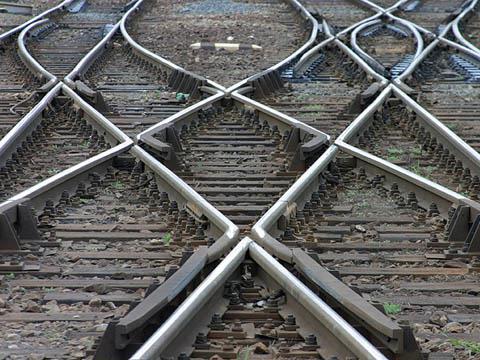
SLEEPERS: A small number of plastic bearers have been installed on some turnouts in the Netherlands since creosoted timber was banned, but a different approach to sleeper design is now being taken by Lankhorst Mouldings, which has looked beyond the straight replacement of wood.
The company specialises in the production of plastic engineering components with encapsulated steel reinforcement, which enables smaller volumes of plastic to be used than would be needed for purely plastic beams of the same strength.
The underside of the latest KLP Cross Tie has a moulded tread, like the sole of a shoe, which provides extra grip to reduce the tendency for sleepers to be pushed outwards on curves. To reduce the amount of plastic needed by 30%, the top of the sleeper contains a trough which is filled with ballast to provide stability. The sleeper itself weighs 70 kg, is made of recycled plastic with four steel reinforcing rods, can be worked with the same tools as timber, and has a design life of 40 years, three to four times longer than wood.
During 2008 testing was undertaken in conjunction with Voestalpine Railpro on German tracks used by 30 tonne axleload trains operated by Vattenfall Europe.
Dutch test institute DeltaRail has subjected sleepers to 3 million loading cycles without observing wear, and ProRail has recently ordered plastic sleepers for trials in Born.

















